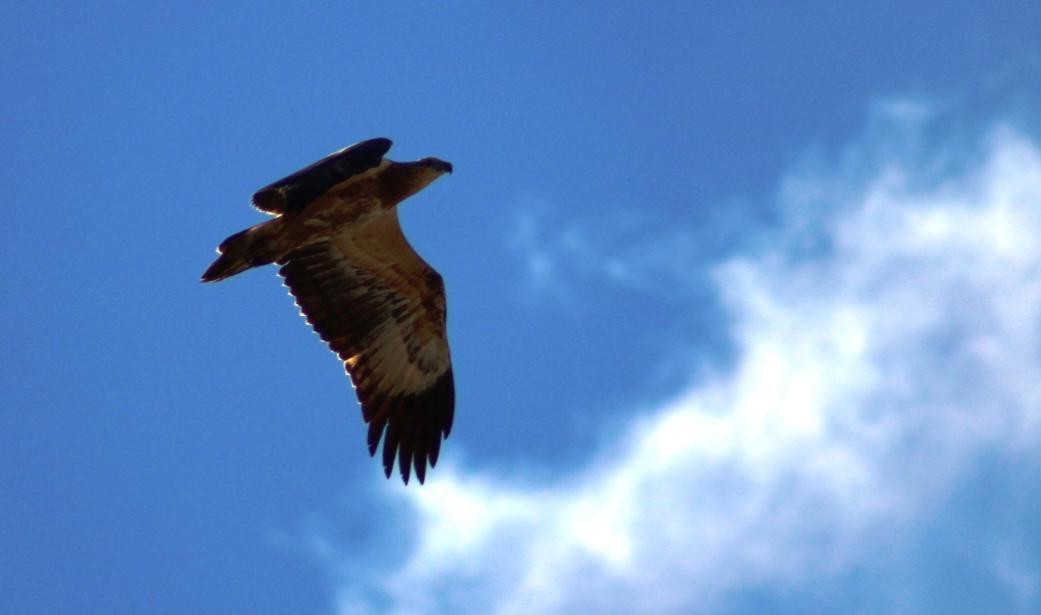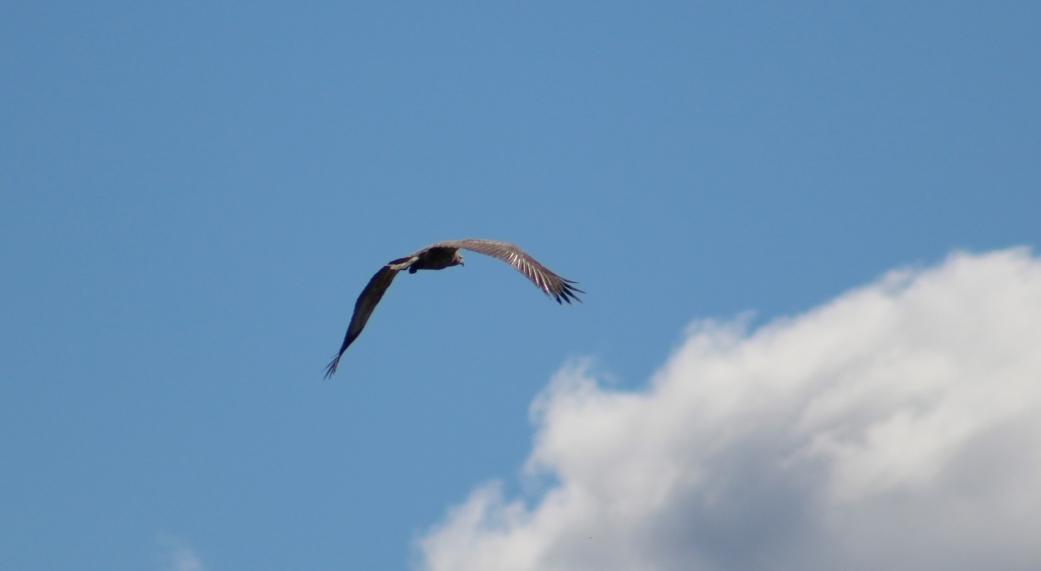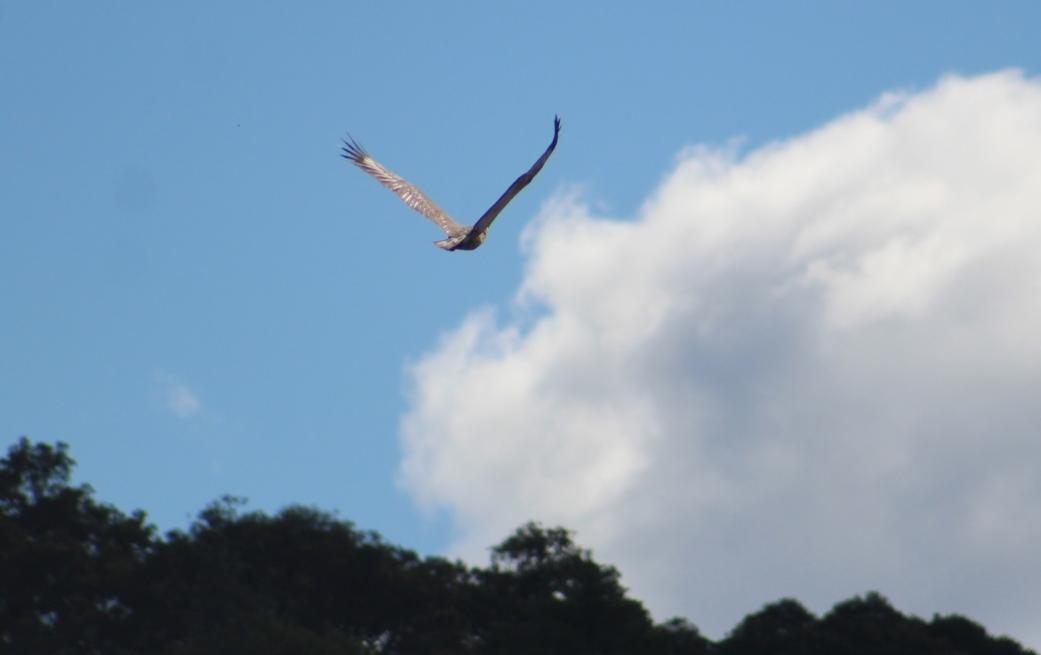May 28 - June 3, 2017: Issue 314
Juvenile Sea Eagle at Church Point
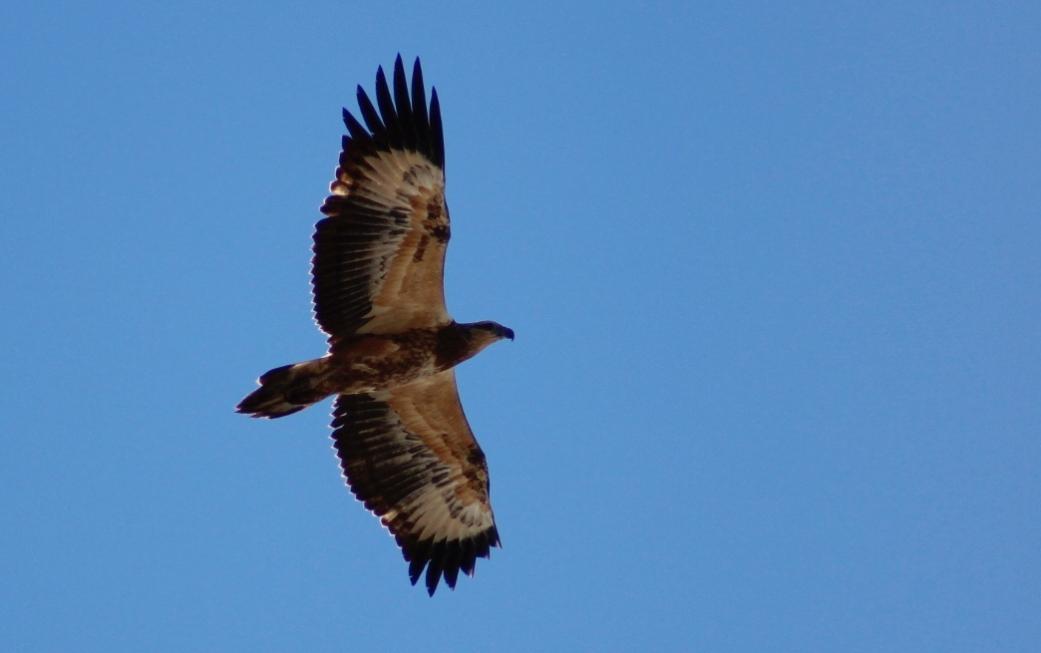
White-Bellied Sea Eagle
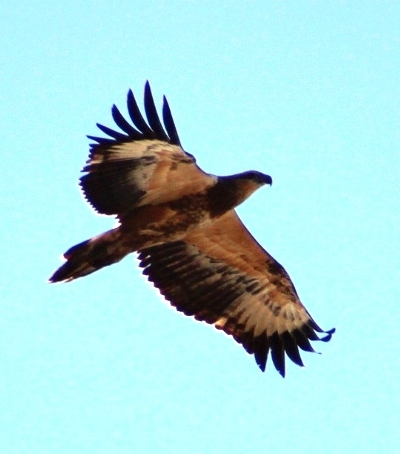 On Saturday afternoon we saw this juvenile white-bellied sea eagle at Church Point, Pittwater, (1 p.m. May 27th, 2017) - this same bird has also been spotted in hills above Bayview too recently. On Saturday it was being chased by two plovers (masked lapwing) and seemed anxious to get out of their 'air space'. As plovers will soon be heading into their breeding season (Winter solstice - June 20-22) it may be that they're building a nest and planning on laying some eggs soon, although many other birds will chase sea eagles form their ranges all year round.
On Saturday afternoon we saw this juvenile white-bellied sea eagle at Church Point, Pittwater, (1 p.m. May 27th, 2017) - this same bird has also been spotted in hills above Bayview too recently. On Saturday it was being chased by two plovers (masked lapwing) and seemed anxious to get out of their 'air space'. As plovers will soon be heading into their breeding season (Winter solstice - June 20-22) it may be that they're building a nest and planning on laying some eggs soon, although many other birds will chase sea eagles form their ranges all year round.The white-bellied sea eagle (Haliaeetus leucogaster), also known as the white-breasted sea eagle, is a large diurnalbird of prey in the family Accipitridae. Originally described by Johann Friedrich Gmelin in 1788, it is closely related to Sanford's sea eagle of the Solomon Islands, and the two are considered a superspecies. A distinctive bird, the adult white-bellied sea eagle has a white head, breast, under-wing coverts and tail. The upper parts are grey and the black under-wing flight feathers contrast with the white coverts. The tail is short and wedge-shaped as in all Haliaeetus species. Like many raptors, the female is slightly larger than the male, and can measure up to 90 cm (35 in) long with a wingspan of up to 2.2 m (7.2 ft), and weigh 4.5 kg (9.9 lb). Immature birds have brown plumage, which is gradually replaced by white until the age of five or six years. The call is a loud goose-like honking. Its specific name is derived from the Ancient Greek leuko-'white', and gaster 'belly'.
Resident from India and Sri Lanka through Southeast Asia to Australia on coasts and major waterways, the white-bellied sea eagle breeds and hunts near water, and fish form around half of its diet. Although rated of Least Concern globally, it has declined in parts of southeast Asia such as Thailand, and southeastern Australia. It is ranked as Threatened in Victoria and Vulnerable in South Australia and Tasmania. The white-bellied sea eagle is listed under the marine and migratory categories which give it protected status under Australia's federal Environment Protection and Biodiversity Conservation Act 1999. As a mainly coastal species, it is vulnerable to habitat destruction in Australia's increasingly populated and urbanised coastal areas, particularly in the south and east of the country, where it appears to have declined in numbers. Human disturbance to its habitat is the main threat, both from direct human activity near nests which impacts on breeding success, and from removal of suitable trees for nesting.
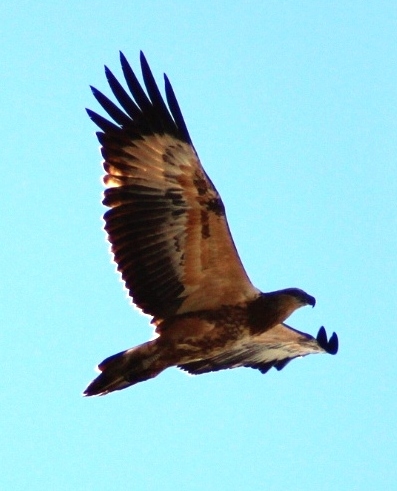 The white-bellied sea eagle has a white head, rump and underparts, and dark or slate-grey back and wings. In flight, the black flight feathers on the wings are easily seen when the bird is viewed from below. The large, hooked bill is a leaden blue-grey with a darker tip, and the irides are dark brown. The cere is also lead grey. The legs and feet are yellow or grey, with long black talons (claws). Unlike those of eagles of the genus Aquila, the legs are not feathered. The sexes are similar. Males are 66–80 cm (26–31 in) long and weigh 1.8–3 kg (4.0–6.6 lb). Females are slightly larger, at 80–90 cm (31–35 in) and 2.5–4.5 kg (5.5–9.9 lb). The wingspan ranges from 1.78 to 2.2 m (5.8 to 7.2 ft).
The white-bellied sea eagle has a white head, rump and underparts, and dark or slate-grey back and wings. In flight, the black flight feathers on the wings are easily seen when the bird is viewed from below. The large, hooked bill is a leaden blue-grey with a darker tip, and the irides are dark brown. The cere is also lead grey. The legs and feet are yellow or grey, with long black talons (claws). Unlike those of eagles of the genus Aquila, the legs are not feathered. The sexes are similar. Males are 66–80 cm (26–31 in) long and weigh 1.8–3 kg (4.0–6.6 lb). Females are slightly larger, at 80–90 cm (31–35 in) and 2.5–4.5 kg (5.5–9.9 lb). The wingspan ranges from 1.78 to 2.2 m (5.8 to 7.2 ft).A young or juvenile white-bellied sea eagle in its first year is predominantly brown, with pale cream-streaked plumage on their head, neck, nape and rump areas. The plumage becomes more infiltrated with white until it acquires the complete adult plumage by the fourth or fifth year. The species breeds from around six years of age onwards. The lifespan is thought to be around 30 years.
The white-bellied sea eagle is generally territorial; some birds form permanent pairs that inhabit territories throughout the year, while others are nomadic. The species is monogamous, with pairs remaining together until one bird dies, after which the surviving bird quickly seeks a new mate. This can lead to some nest sites being continuously occupied for many years (one site in Mallacoota was occupied for over fifty years). Immature birds are generally dispersive, with many moving over 50 km (31 mi) away from the area they were raised. One juvenile raised in Cowell, South Australia was reported 3,000 km (1,900 mi) away at Fraser Island in Queensland. A study of the species in Jervis Bay showed increases in the numbers of immature and subadult birds in autumn, although it was unclear whether these were locally fledged or (as was considered more likely) an influx of young birds born and raised elsewhere in Australia. Birds are often seen perched high in a tree, or soaring over waterways and adjacent land. They are most commonly encountered singly or in pairs. Small groups of white-bellied sea eagles sometimes gather if there is a plentiful source of food such as a carcass or fish offal on a ship. Much of the white-bellied sea eagle's behaviour, particularly breeding, remains poorly known.
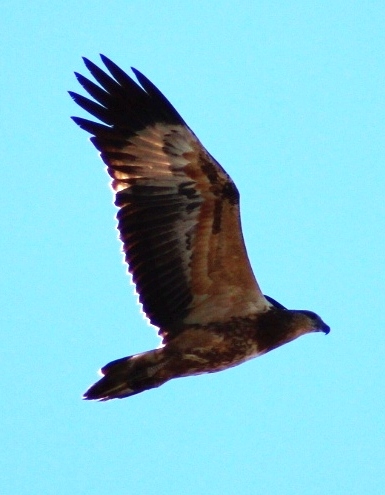 The white-bellied sea eagle is revered by indigenous people in many parts of Australia, and is the subject of various folk tales throughout its range.
The white-bellied sea eagle is revered by indigenous people in many parts of Australia, and is the subject of various folk tales throughout its range.The guardian animal of the Wreck Bay aboriginal community, it is also the official emblem of the Booderee National Park and Botanic Gardens in the Jervis Bay Territory. The community considered localities around Booderee National Park to be connected with it.
A local Sydney name was 'gulbi', and the bird was the totem of Colebee, the late 18th century indigenous leader of the Cadigal people[2].
The white-bellied sea eagle is important to the Mak Mak people of the floodplains to the southwest of Darwin in the northern Territory, who recognised its connection with "good country". It is their totem and integrally connected to their land. The term Mak Mak is their name for both the species and themselves. The Umbrawarra Gorge Nature Park was a Dreaming site of the bird, in this area known as Kuna-ngarrk-ngarrk. It was similarly symbolic to the Tasmanian indigenous people—Nairanaa was one name used there.
As we are now a few days into the Guringai Festival 2017 (May 26 to July 9) with a theme this year of “Connections”, inviting people of all ages to connect and participate in events across the region, a small celebration of one wonderful story to connect our younger readers to these older knowings that are close to or include here, and one story from a lady who regularly visited here and saw a sea eagle, may be a good way to begin to look around us with fresh eyes and wonder how many stories this place has and how these can be discovered again and renewed.
A BIRD LEGEND
The aborigines sometimes kept birds and animals as pets, but in all instances that may be enquired into it is found that the pet by some mischance or peculiar trait or impulse strayed into a camp and stayed there. However, this had nothing to do with the belief in an "affinity." Nor yet the belief in and recognition of a "totem." That possibly originated in a knowledge of evolution-in the settled idea that during the ages everything has changed in form-and no outstanding fact of Nature escaped being considered the beginning or the dwelling-place of an ancestor or an originator.
But something of a parody of this fundamental belief is the acceptance of an affinity in the shape of a bird or an animal that knows of its being related to a human and who acts as a protector of those of whom it is a family part. In this way the last full-blooded woman of the Cammaray people believed in the snake. She says that the black snake always indicates to her whether or not an undertaking of hers is to be successful, when a calamity is about to happen or has just happened in her immediate family, when she is personally threatened with great loss and whether or not the time be propitious for the doing of any important thing.
She tells many weird tales of warnings shown to her by her affinity. The lyre-bird, she tells, was the affinity of a man of her people away back in the time before history, and he had one as a pet. He was very proud of the fact that his bird mimicked so marvellously, and he arranged a competition. People who belonged to such birds as parrots, black cockatoos, wattle birds-those with a clear, distinctive call-assembled, and they listened to the lyre-bird not only imitating, but excelling each in its own song.
One bird was not claimed by anybody, and it sat disconsolately on a limb, apparently taking no notice of the proceedings; and then, just before dark, it made its effort.
The lyre-bird, nothing loth, imitated it perfectly. But the other bird was not finished. In another key it performed again, and still in another, until the lyre-bird was bewildered. It failed to follow; therefore we may now hear the great bird mimic as we stand, say, at Echo Point in the Blue Mountains, or under the hills of the Snowy or the Cann, going through all its repertoire, imitating not only every other bird, but every sound it has ever heard. But when it comes to the laugh of one it fails. The bird it cannot properly mock is the kookaburra. The lyre-bird man of the story was discredited, and therefore in later years such men were never of much account in the eyes of their compatriots, while those of the kookaburra, though it is recognised as an affinity of a much later date, are always people of great importance.
And by some strange coincidence we have taken the kookaburra to our hearts, and we picture him much more as the bird-representative of Australia than the emu which figures as such officially.
from - Australian Legends by C. W. Peck [1925]
The Cammeraygal, variously spelled as Cam-mer-ray-gal, Gamaraigal, Kameraigal, Cameragal and several other variations, are an indigenous Australian group of people who were united by a common language, strong ties of kinship and survived as skilled hunter–fisher–gatherers in family groups or clans that inhabited the Lower North Shore of Sydney, New South Wales, Australia. Norman Tindale notes the Cammeraygal as a clan of the Eora people, who in turn formed part of the larger Kuringgai.
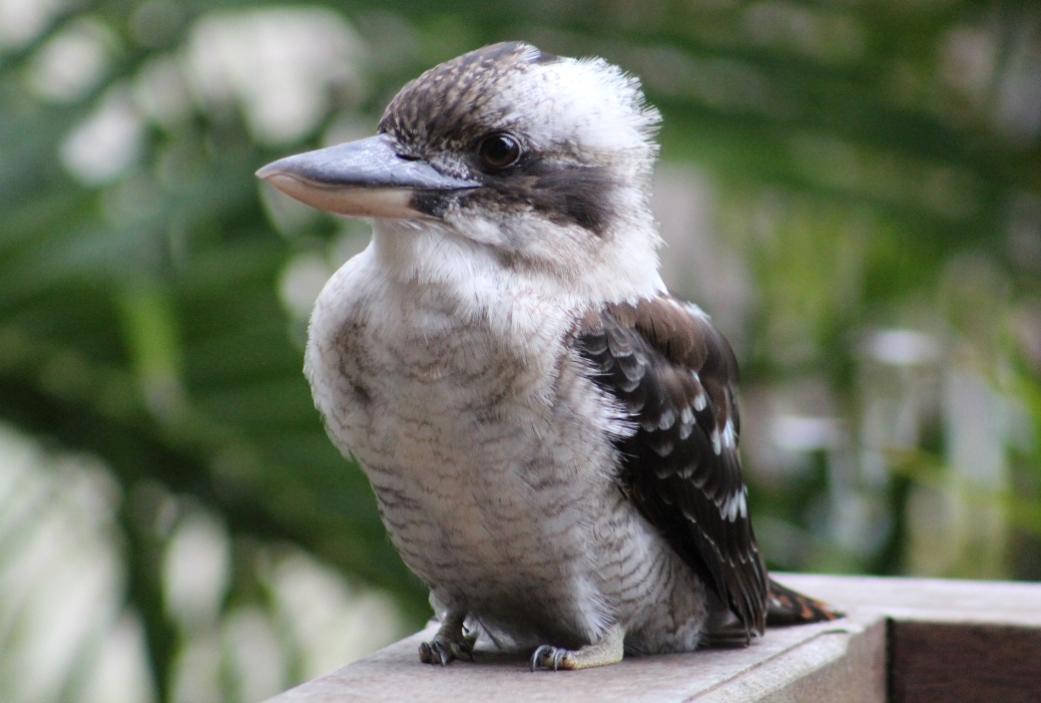
Children’s Page
Conducted by Ella McFadyen
A Sea Change
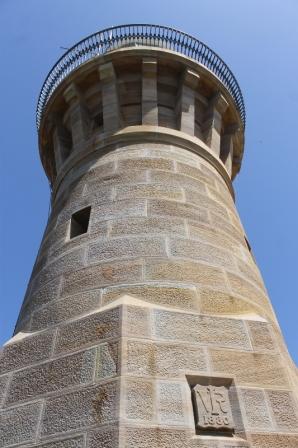 When First Correspondent and Fairy Godmother returned from their three weeks of holiday in Queensland Cinderella, said that it was quite time she took, if not a holiday , at least a change.
When First Correspondent and Fairy Godmother returned from their three weeks of holiday in Queensland Cinderella, said that it was quite time she took, if not a holiday , at least a change. UNFORTUNATELY, holiday was not quite possible. There was too much to do. However, she put some things in a bag, bought new bathing' shoes, and fiddled about with her typewriter till she discovered the locking gear that is supposed to ensure safe carriage to the portable models. Of course, it would have been more fun to leave the typewriter and take the camera instead, but that could not be. Ali Baba, with a deep distrust in his golden eyes, got between the adventurer and the garden gate and wept aloud. No one needs to tell him what picked bags mean. Even a last-minute, gift of sardines did not quite mend that small broken heart. It is sad business leaving one's pets; but that once over, heigh-ho! for Palm Beach and the surf!
At Palm Beach one may sit in a deep balcony (made from the rough stone which seems to be the typical architecture of that holiday land) and look up over the surf and the dunes to Barranjoey Lighthouse. See that spelling?
Mr. Russell, who tends the lighthouse and really must know, says that Barranjoey and not 'Barren-joey' is the correct form officially accepted, and he pointed to the lettering on a locker in proof thereof. In the early days (the lighthouse was opened in 1880) 'Barrenjuey' was the recognised form, but that has been discarded. It is a windswept place, that lighthouse hill with the brown stone building of the lighthouse and its residence and high-walled garden looking rather like a fort built to defy invading elements. Lower down the slope, on the sheltered side next to Pittwater, there is pretty vegetation and a nice little rocky stair of rough stones.
Flocks of wild goats wander about, not very brave in spite of big horns and long beards; and down at the foot of the hill there is a shed where a man once kept, a little museum of snake-skins and such trophies he collected. He had the skin of an echidna there and some really fine snakes and iguanas.. A pity he could not have collected for his trophies the wobbegong some fishermen left on the beach. This, perhaps the only really comic member of the shark family, was about five feet long and very fat. He had a foolish face with fringy things like seaweed for whiskers, and such queer fins that they looked almost like little legs. He probably used them for scuffling along the bottom of the pools, for he hunts about on the bottom, “I think when my glass slippers wear out,'' said Cinderella, I shall get a pair of shoes made from the beautifully patterned, carpet-like skin of a wobbegong — after having it soaked for a twelvemonth in eau-de-cologne.'
WHEN the morning dip was over and the morning work of getting together copy and answering letters (those letters that never cease for a day!) had been faithfully attended to, came freedom. They were mostly companioned hours, too. Francis Sherwood, our Nana Glen member, shared a day: and 'Split-pin.' who will be remembered only by our most ancient members as one who occasionally made daring lightning raids across the border of the Ingle Nook, shared another. Once there was David, who is going to be a member some day, but, is only five as yet. Sheila, too, was a little girl-chum with a genius for showing one nice walks. In passing we must wish her success with her bursary exam.
Then there was an old sea-eagle who was rather good company along the cliff at evening. He went out at that hour to do his perilous fishing, and once came back trailing something that looked like a stingaree with a long tail. Jock, a long-headed Scotch terrier with an approachable heart that really belied his extraction (Scotch terriers should be a little dour and slow to be friends, but Jock always loved at first sight anyone who would take him home to tea and biscuits), was always ready to accompany one on a walk.
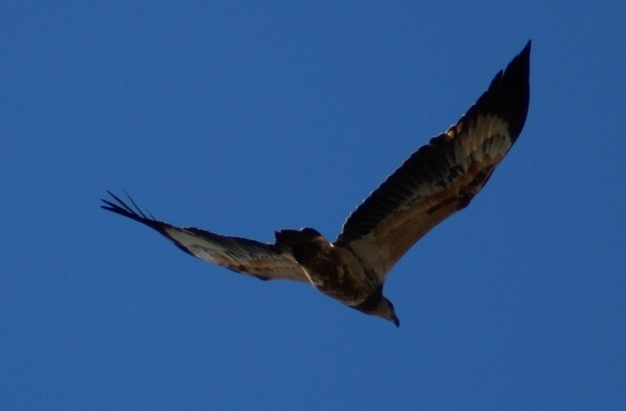
Once a dauntless company of adventurers (three in number) set off on the Newport bus, with an enormous picnic basket, and made their way through the callistemon scrub, that seemed all afire with blossom, towards the cliffs where hides the Hole in the Wall. There was some good scrambling before the basket was set safely on a ledge and the sleep path to the cave was discovered and essayed. It is a most impressive cave, full of the footmarks of little wild creatures, and very dark and cavernous towards the rear, where a fall of rock has blocked what, was, I believe, at one time a landward exit. Anyway, it was a good cave for adventures, and could quite suitably, have been used to hide a chest of pirate treasure; . (Anyone want to fit out an expedition to go there and make sure ?) ; It was pity Cinderella did not have her camera along that day: but she could hardly have taken a snap of herself dauntlessly climbing up to the cave mouth, and the comrades below were too steeply below to; have done so, either.
BEST of all times, probably, were the lonesome rambles along the cliff path, when one' could shout reams of Gordon's glorious 'Song of the Surf' with no one ;but the sea-eagle to hear. Most people at the seaside murmur bits of 'Sea Fever' and other Masefield fragments, and lots more no doubt think of Byron, even if he is considered too out-of-date to quote aloud; but all proper Australians should get 'The Song of the Surf' by heart before' they go' down to the sea.
Out on the rocks towards Whale Beach, where one can gloat over the pools of sea-anemones (pools lined with crystal and velvet and sprinkled with jewels, where the many-coloured living blossoms quiver and unfold) , one could hear the big waves whooping in over the sunken ledges and feel the shock of them as they surged through the hidden channel beneath, making all the rocky bases of the cliffs shudder with their force. Only then did one get in full the sonorous splendour of Gordon's lines —
You come, and your crests are hoary with the foam of your countless years;
You break With a rainbow glory through the spray of your glittering tears.
To watch the breaking of a high surf on these great rocks and realise the immensity of the force that sends them swinging in is to touch the verge of a very great discovery — a thing that breaks like a dazzling light and soars splendidly above the power of words into the realm of conviction. Then the waves fall back from the cliff in a smother of foam; the sea-eagle, swoops and wheels again to the land, and the great discovery, that a moment since was about to solve all mysteries, is caught up again just beyond human understanding. The mystery remains.
When against the rocks he was hurled, and sucked again to the sea,
On the shores of another world, on the brink of eternity.
On the verge of annihilation, did it come to that swimmer strong.
The sudden interpretation of your mystical, weird-like song ?
The lines ought to be graven on a stone slab along the cliff path for the joy of all who love poetry and the sea, and the swinging, rhythmical waves of both. And that brings us back to the earth and the realisation that the seaside days are spent: that there are hundreds of unopened letters lying everywhere, and the Poetry Competition ought to be judged. It has been held over quite long enough.
Little friends who wish to visit Cinderella are reminded that the time to call at the 'Sydney Mail' Office , ' Herald ' Building, Pitt and Hunter streets , is between 10 and 12 on Tuesday mornings. Cinderella is on the second floor.
Children's Page (1928, October 31).Sydney Mail (NSW : 1912 - 1938), p. 54. Retrieved from http://nla.gov.au/nla.news-article158404607
References
1. White-bellied sea eagle. (2017, May 20). In Wikipedia, The Free Encyclopedia. Retrieved from https://en.wikipedia.org/w/index.php?title=White-bellied_sea_eagle&oldid=781388260
2. Smith, Keith Vincent (July 2005). "Port Jackson People". NLA News. National Library of Australia.
